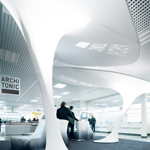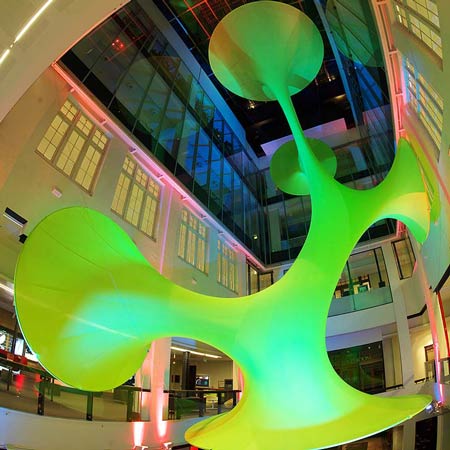
Green Void by LAVA
Architects LAVA have created an installation called Green Void in the central atrium of Customs House in Sydney, Australia.
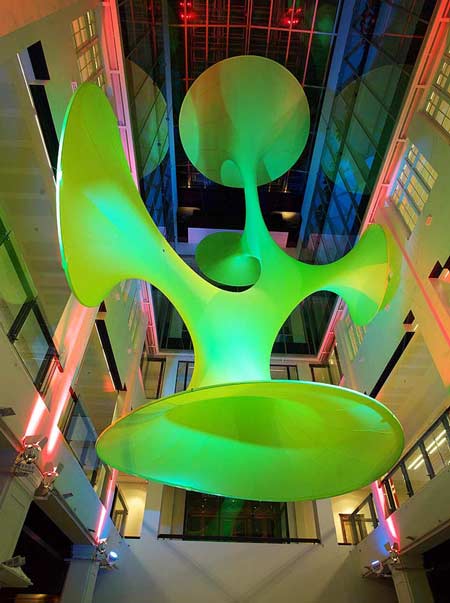
The 20 metre tall sculpture consists of lightweight, woven fabric stretched over aluminium profiles and suspended on 2mm stainless steel cables.
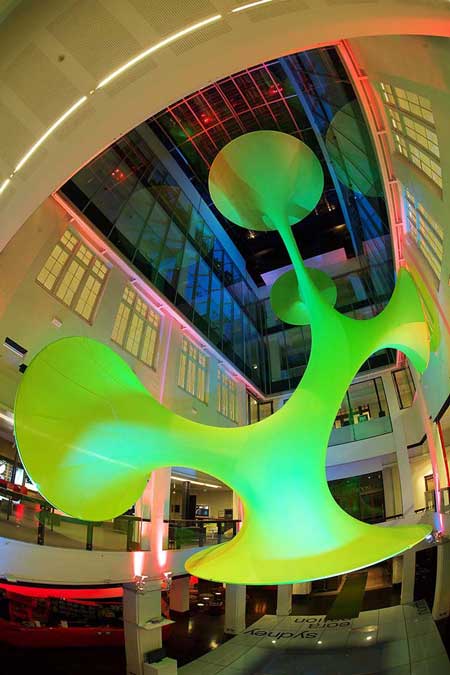
The installation has a surface area of 300 square metres but encloses 3000 cubic metres of space.
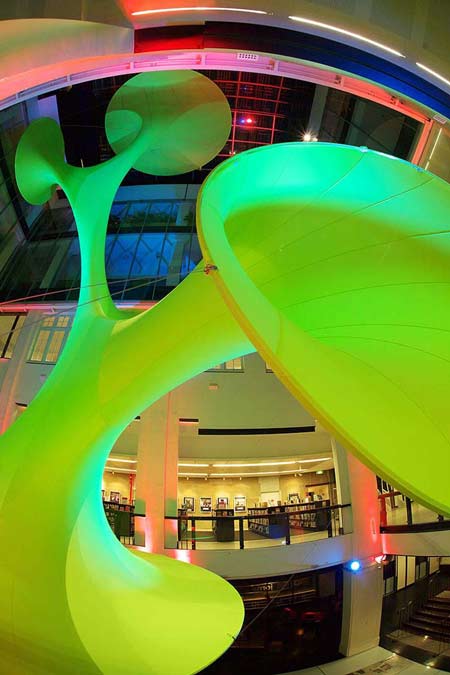
The following is from LAVA:
--
Chris Bosse, Tobias Wallisser and Alexander Rieck’s LAVA (Laboratory for Visionary Architecture) launched the ‘Green Void’, a spectacular sculptural installation suspended in the central atrium of Sydney Customs House.
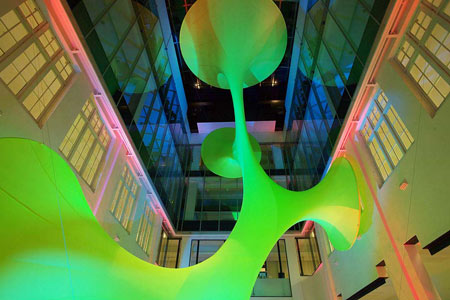
LAVA designed the ‘Green Void’ installation specifically for the Customs House central atrium which spans through all five levels. Suspended from the top level Café Sydney restaurant, a vertical distance of almost 20m, the sculpture provides an intense visual contrast to the beautifully restored heritage interior of Customs House. GREEN VOID is a digital design, derived from nature, realized in lightweight fabric, using the latest digital fabrication and engineering techniques, to create more with less. Comprised of 3000 cubic meters of space is enclosed within a minimal surface area of 300 square meters and uses only 40 kg of lightweight material.
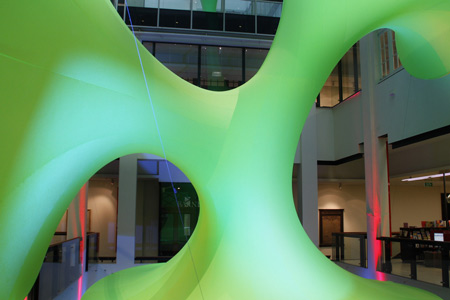
The Customs House ‘Media Wall’ displays content across 11 video screens detailing the process of design, engineering, fabrication and installation of the sculpture along with recent international design projects completed by the LAVA team.
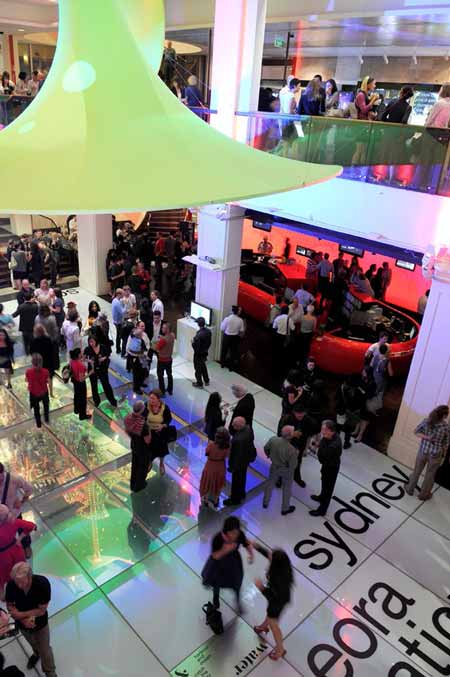
3D works by multimedia artist Peter Murphy creating 3d immersive imagery can be viewed without shutter glasses displayed over the new 3D screen technology.
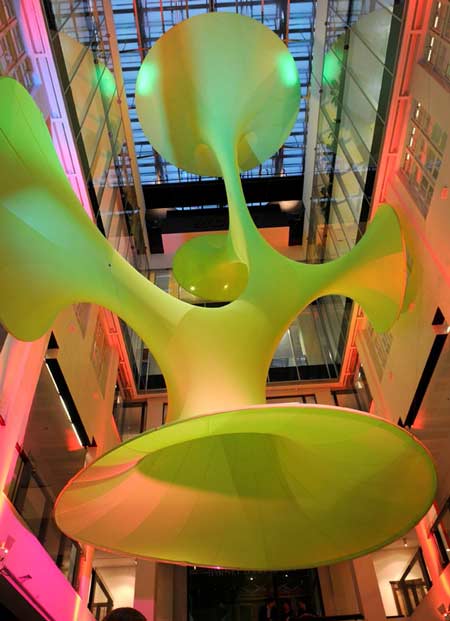
The entire installation is immersed in a soundscape by sound artist David Chesworth, who created a “digital rainforest”.
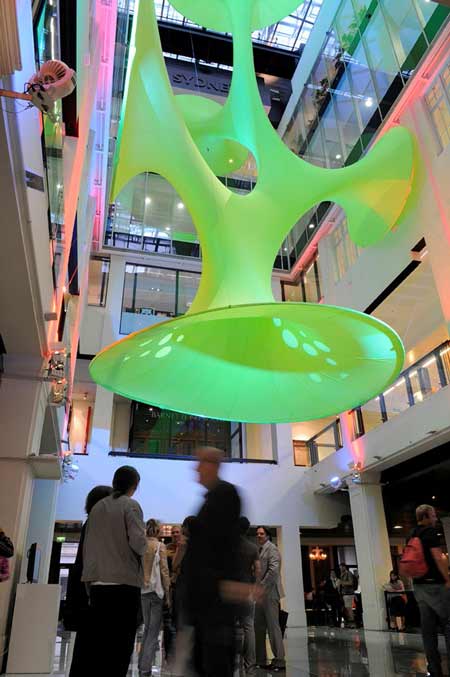
Graphic design by emerging graphic designers TOKO, featuring a 3dimensionally layered catalogue, a wireframed mediawall, and projections onto the building.
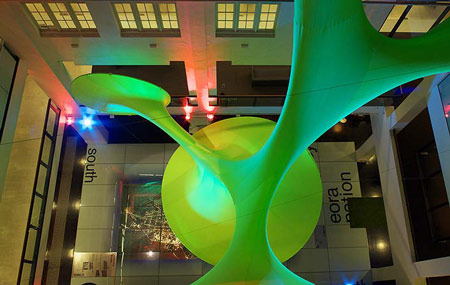
Tensile Membrane Company Mak Max, the engineers and fabricators of the sculpture have developed a unique workflow from digital design to Digital Fabrication of complex shapes.
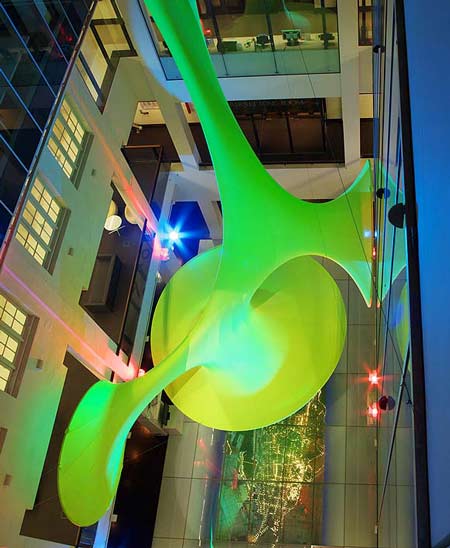
The exhibition is part of the continuous multidisciplinary program developed by Jennifer Kwok, the Manager of Customs House, to activate the public space with a focus on featuring contemporary architecture, photography and multimedia exhibitions.
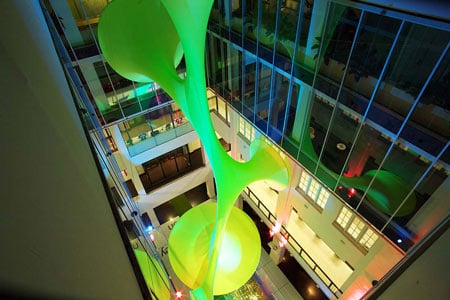
The installation is inspired by the relationship between man, nature and technology. SENSUAL, GREEN and DIGITAL, the installation captures some of the key visions of the design team, which has over the past 12 months established offices in Sydney, Abu Dhabi and Stuttgart.
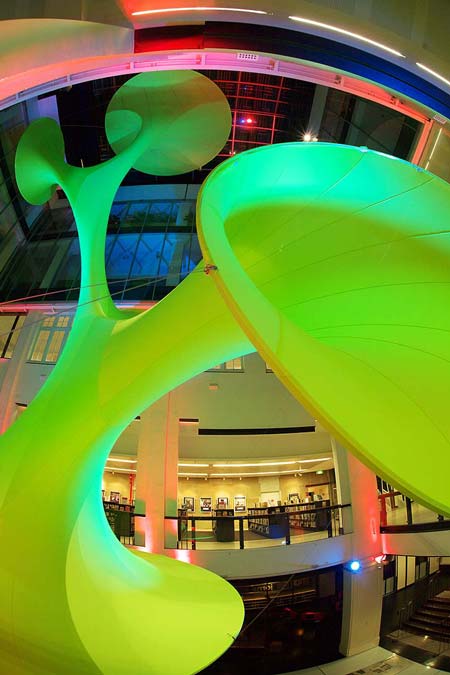
The project caps off a spectacular year for the trio and follows LAVA’s successful launch of the Michael Schumacher World Champion Tower (MSWCT) an ultra-luxury residential tower in October in Abu Dhabi, and the November launch of the future hotel Showcase suite in Germany.
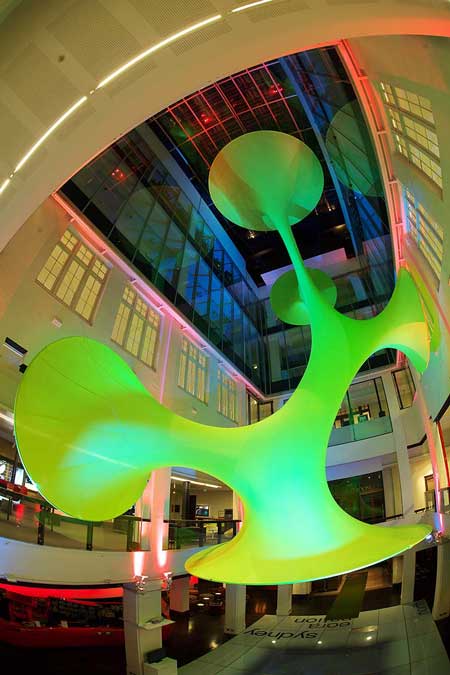
The team also managed to pick up Best International Interior and the Sustainability Grant at the 2008 Interior Design Awards.
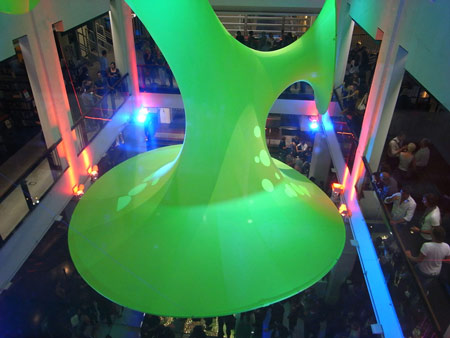
Chris’s work on the Watercube Swimming Centre for Beijing 2008 received the prestigious Atmosphere Award at the 9th Annual Venice Biennale and Chris was recently recognized as an emerging architect on the world stage by the RIBA London.
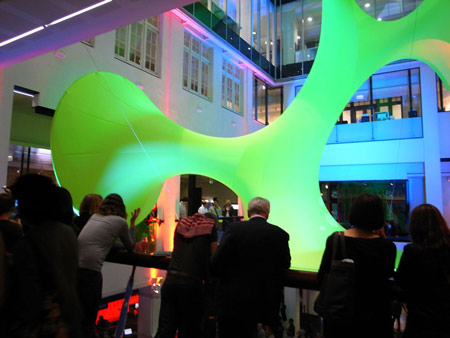
Tobias was instrumental in the emergence of the recent Stuttgart Mercedes-Benz Museum between 2002 and 2007 which has attracted worldwide attention for its innovative spatial concept.
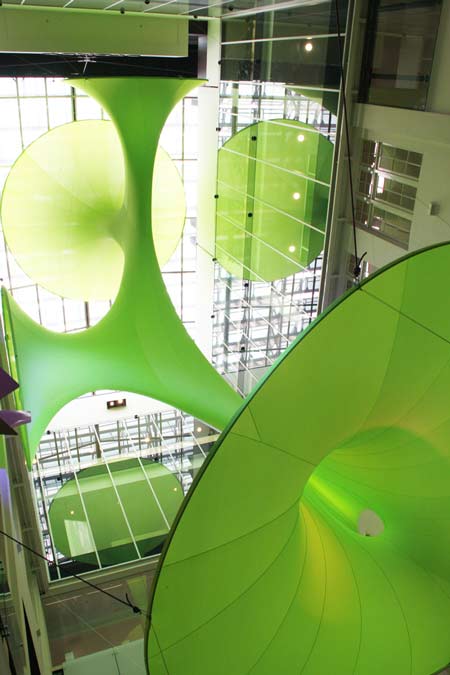
The installation is a ‘Minimal Surface’ that consists of a tensioned Lycra material, digitally patterned and custom-tailored for the space. The Five “funnels” of the sculpture reach out to connect the various levels and carefully hover just off the main interior atrium of the Customs House above the model of the city.
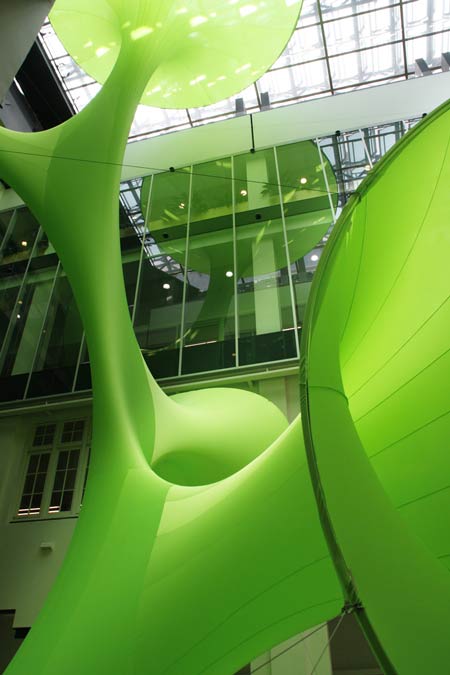
LAVA Asia Pacific Director Chris Bosse explains: “The shape of the installation is not explicitly designed; it is rather the result of the most efficient connection of different boundaries in three-dimensional space, which can be found in nature in things like plants and corals. We only determined the connection points within the space and the rest is a mathematical formula, a minimal surface.
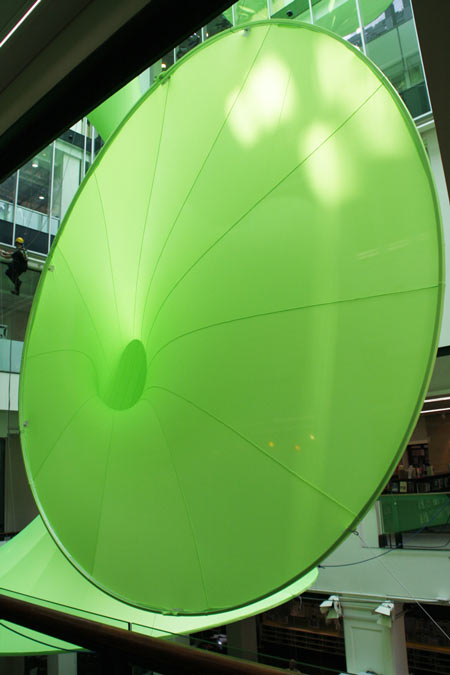
The concept was achieved with a flexible material that follows the forces of gravity, tension and growth, similar to a spider web or a coral reef. We are interested in the geometries in nature that create both, efficiency and beauty”
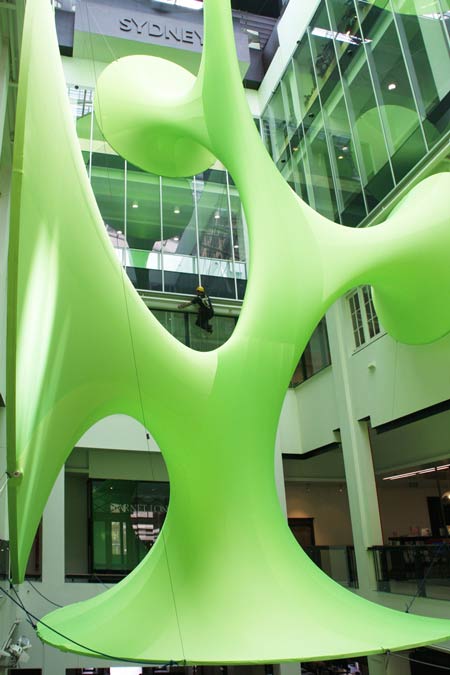
The lightweight fabric design follows the natural lines, contours and surface-tension of the fabric. While appearing solid, the structure is soft and flexible and creates highly unusual spaces within customs house, which come to life with projection and lighting.



Since the 1970’s, with Frei Otto’s soap-bubble experiments for the Munich Olympic Stadium, naturally evolving systems have been an intriguing area of design research; something that hasn’t been lost on the team and their fascination with new building typologies and naturally developed structures.
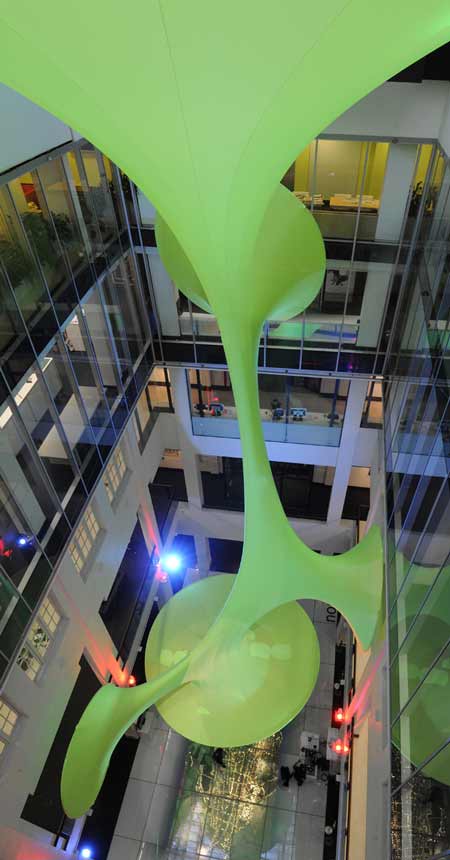

Lava sought for advise and inspiration from American artist Alexandra Kasuba, who since Woodstock 1972 has created imaginative membrane sculptures around the world, followed by international artists such as Amish Kapoor and Ernesto Neto.
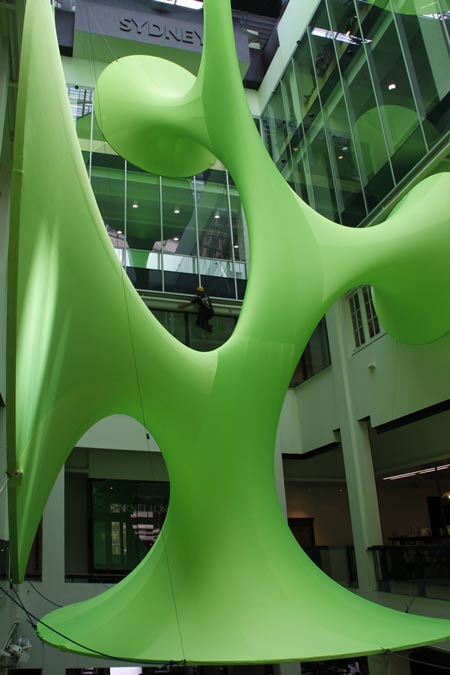

“We wanted to see how far we could take the idea of creating more space with less material, filling 3000 cubic meters, the equivalent of 8 million cola cans, with a minimal surface of 300 square meters weighting only 40 kg.”, emphasises Tobias Wallisser Director of LAVA Europe and professor of Digital Design at the State Academy of Fine Arts Stuttgart.
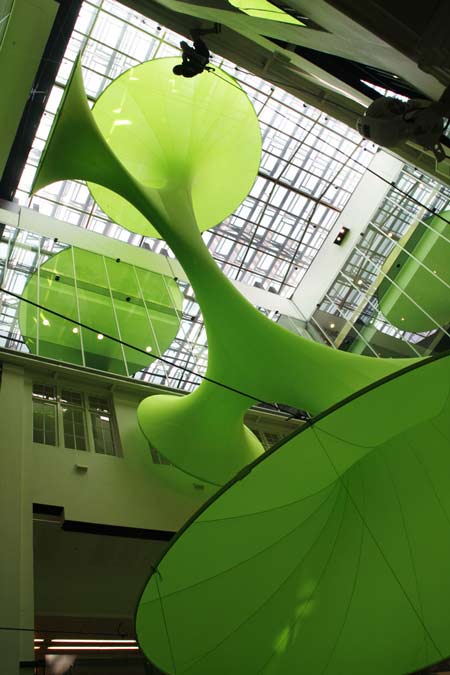

Rising up to the top level restaurant, a vertical distance of almost 20m, the sculpture provides an intense visual contrast to the beautifully restored heritage interior of Customs House.
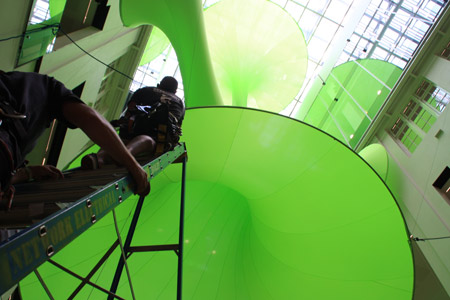

Green Void Features:
Digital Workflow
The project renounces on the application of a structure in the traditional sense. Instead, the space is filled with a 3-dimensional lightweight-sculpture, solely based on minimal surface tension, freely stretching between wall and ceiling and floor. The design and fabrication procedure uses state-of-the-art digital workflow; beginning with 3D computer modelling, that is engineered structurally before undergoing a process of computer controlled (CNC) material cutting and mechanical re-seaming.
The computer-model, based on the simulation of complexity in naturally evolving systems, feeds directly into a production-line of sail-making-software and digital manufacturing.
The product shows a new way of digital workflow, enabling the generation of space out of a lightweight material that requires minimal adjustments onsite to achieve a complete installation in an extremely short time.
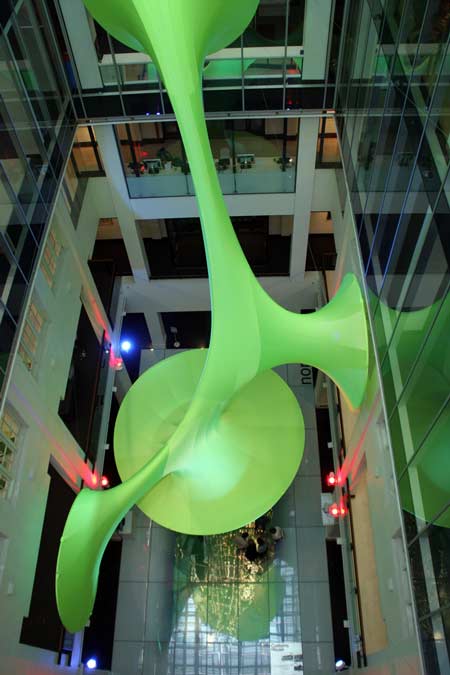

Sustainability
LAVA’s process of optimized minimal surface design and CNC (computer numeric code) fabrication technology allows the sculpture to reveal a new dimension in sustainable design practice.
Fulfilling the sustainable agenda of the venue, the work succeeds in its quest for optimum efficiency in material usage, construction weight, fabrication and installation time, while at the same time achieving maximum visual impact in the large atrium space.
The pavilion is easily transportable to any place in the world; can be quickly installed, and is fully reusable.
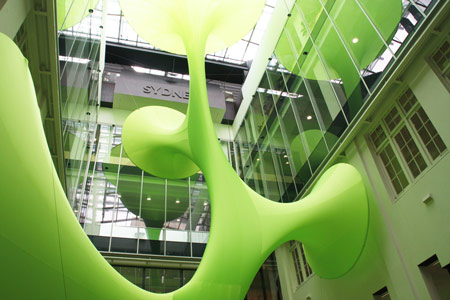

Fabrication
The sculpture materials consist of a double stretch, 2 way woven fabric that is mechanically attached to specially designed aluminium track profiles. Each profile is suspended from above, and to the side, on 2mm stainless steel cabling.
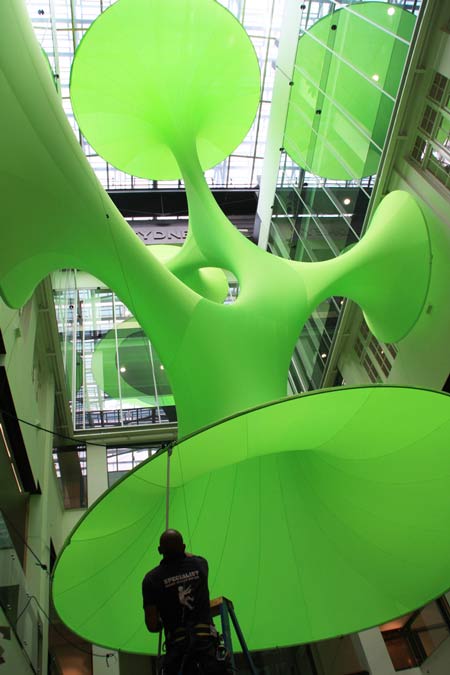

Key data:
Building Materials: Specially treated high-tech Nylon and light
Dimensions: approx. 21x8x12m
Surface Area: 300 m2
Volume/space: 3000 m3
Weight: 40 kg
Construction/manufacturing time: 5 weeks
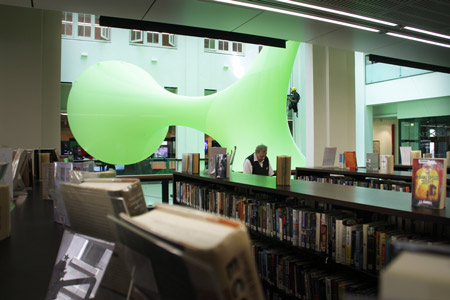

Green Void Credits:
Chris Bosse, Tobias Wallisser, Alexander Rieck
Jarrod Lamshed, Esan Rahmani, Kim Ngoc Nguyen, Anh Dao Trinh, Erik Escalante Mendoza, Pascal Tures, Mi Jin Chun, Andrea Dorici.
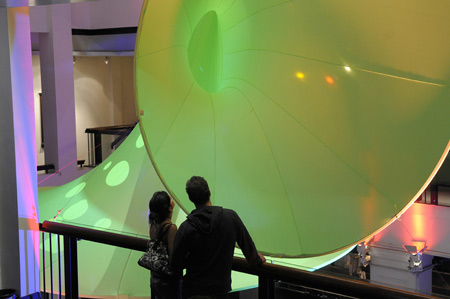

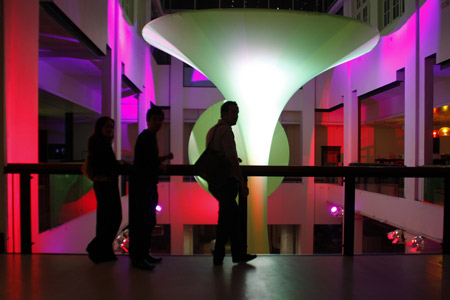

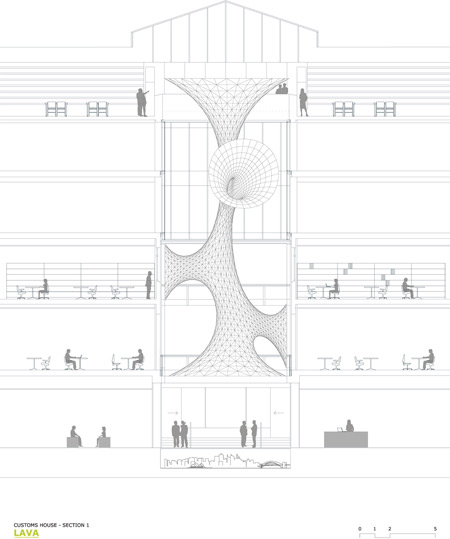

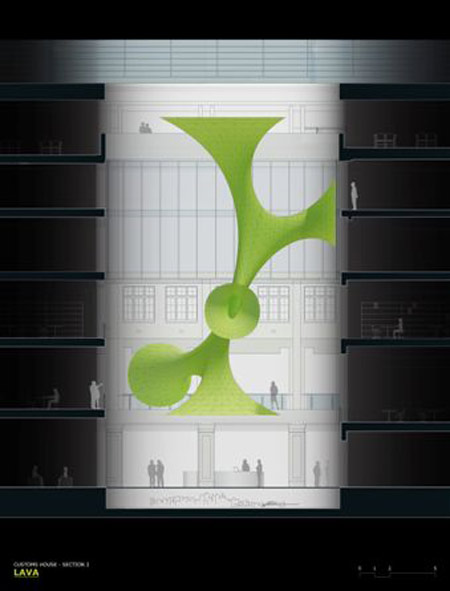

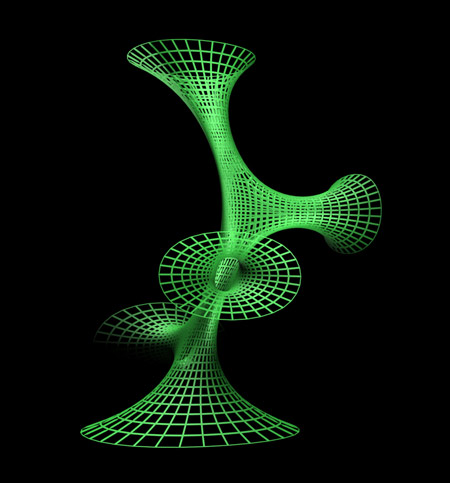

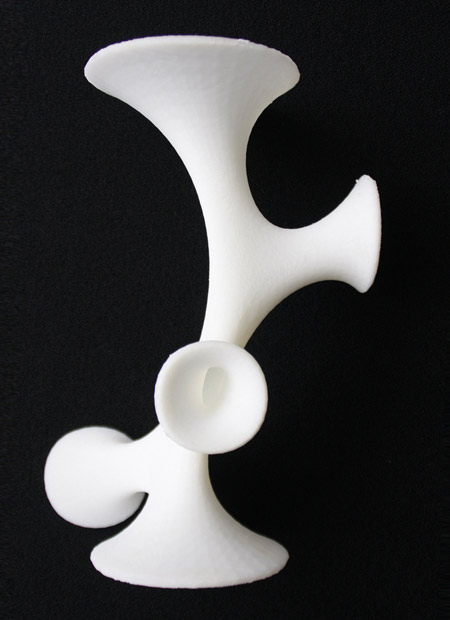

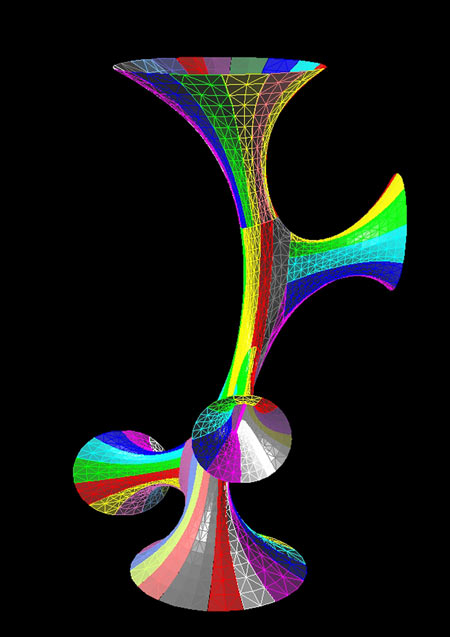

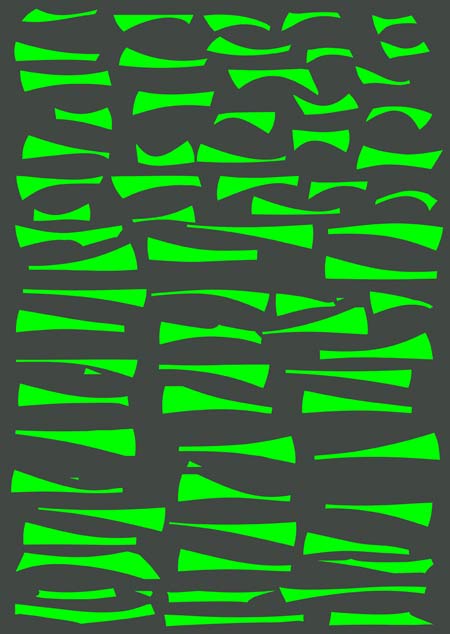

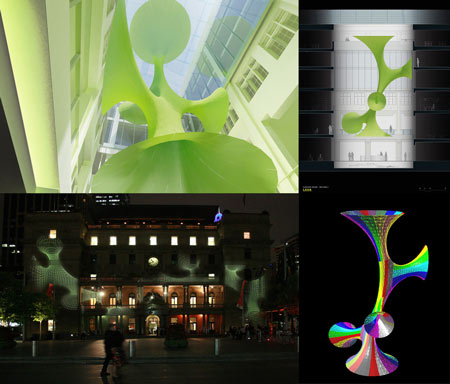

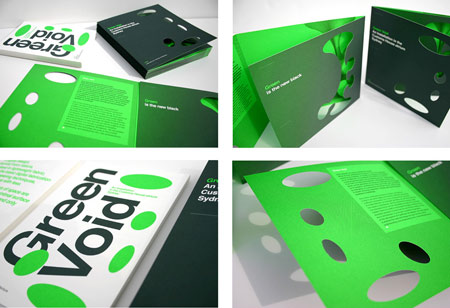

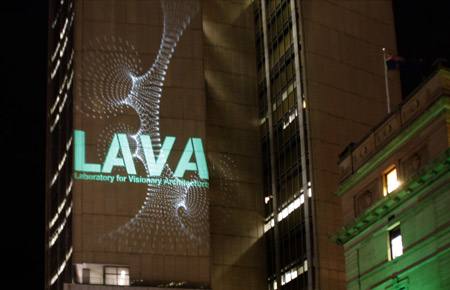

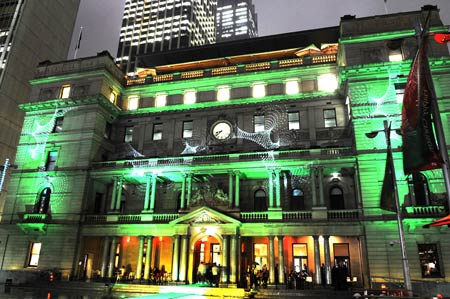

More about LAVA on Dezeen:
.
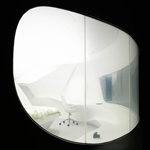

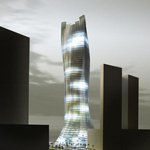

Michael Schumacher World Champion Tower
